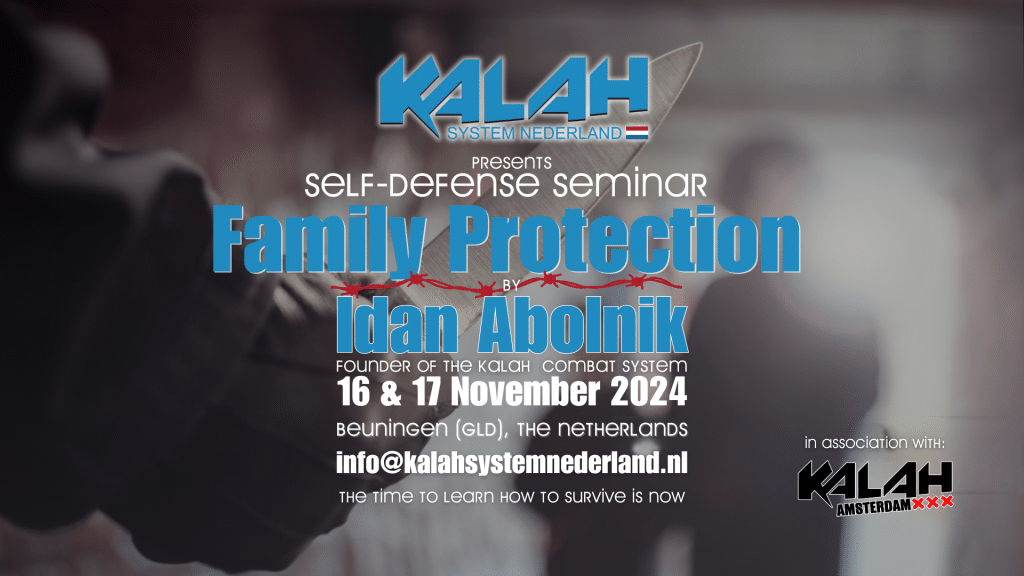In a violent confrontation, staying calm can be the difference between life and death. The ability to defend yourself doesn’t just depend on physical strength or technical skills. It starts in your mind, with how you react under extreme pressure. Your body’s natural fight-or-flight response can save you, but if you don’t know how to control it, it can also freeze you in place when every second matters.
In this post, we’ll explore the psychology of self-defense, how the mind responds to high-stress situations, and why staying calm is critical. We’ll also discuss how self-defense training, like the Kalah Combat System, prepares both the mind and body for real-world violence, giving you the tools to survive when it truly counts.
The Biology of Stress: What Happens to Your Body During a Violent Attack
When you’re suddenly faced with a violent threat, your body responds automatically. This is the fight-or-flight response, a survival mechanism hardwired into our brains. In these moments, your heart rate increases, your muscles tense, and your senses become hyper-alert as your body prepares to either fight back or escape.
But this natural response has its downsides. Under extreme stress, cognitive functions narrow, and many people experience tunnel vision or auditory exclusion—the brain stops processing certain sensory information. Your fine motor skills deteriorate, and complex movements become much harder to execute. You might even find yourself freezing, unable to move or think clearly, despite the danger in front of you.
Studies on adrenaline and decision-making have shown that high levels of stress hormones impair the brain’s ability to think flexibly.
Research from Roozendaal & McGaugh (2011) explains how adrenaline and cortisol affect memory and reaction time under stress. Your brain’s prefrontal cortex—the part responsible for decision-making—becomes overwhelmed, making it difficult to recall even simple techniques you may have practiced countless times.
The Freeze Response: Why It Happens and How to Overcome It
One of the most dangerous reactions to fear is the freeze response. When the mind is overwhelmed by the intensity of a threat, freezing is a common outcome, especially for those who have never been exposed to extreme violence or stress.
A key example of how ordinary people can survive extreme danger is discussed in Amanda Ripley’s The Unthinkable: Who Survives When Disaster Strikes (2008). Ripley explores why some people manage to stay calm and act decisively during life-threatening events, while others freeze. The ability to survive often comes down to mental preparedness and situational awareness. In moments of crisis, those who can quickly assess their environment, manage their fear, and make clear decisions are more likely to survive. These individuals aren’t necessarily trained professionals; many, as Ripley points out, rely on innate instincts and a strong sense of the situation unfolding around them. This principle underscores the importance of training the mind, not just the body, in self-defense situations—because when disaster strikes, it’s your mental state that may determine your survival.
Psychologist John Leach (Leach, 2004) explains that people freeze in these situations because the brain’s threat perception system becomes overloaded.
However, research on stress inoculation training (Meichenbaum, 2007) shows that controlled exposure to stress helps individuals manage their fear response and act effectively under pressure.
How Self-Defense Training Helps You Manage Fear
Knowing how to manage your body’s natural response to fear is just as important as knowing how to physically defend yourself. Well-designed self-defense training doesn’t just focus on technique—it prepares you mentally for the stress of a real confrontation.
This is where systems like the Kalah Combat System excel. Founded by Idan Abolnik, Kalah is built on the principle that self-defense must be instinctive and adaptable to chaos. The system is not about teaching complex moves that fall apart under pressure, but rather about training people to react instinctively when fear kicks in.
Scenario-based training is central to Kalah’s methodology. This type of training immerses students in real-world simulations where they are forced to react to high-stress situations. By practicing under pressure, you train your mind to stay calm and make quick decisions when faced with unpredictable violence. Research in police and military training has shown that individuals who undergo scenario-based training are much more likely to act decisively and avoid freezing in high-stress encounters.
The Role of Scenario-Based Training in Preparing You for Real Threats
The only way to prepare for the chaotic nature of a violent confrontation is to simulate it as closely as possible in training. Scenario-based training conditions both the body and mind to function under stress. By replicating real-world threats—whether it’s a home invasion, an armed robbery, or a street mugging—you learn to adapt your techniques and keep your head clear when faced with the unexpected.
Research from Blair & Schweit (2014) on active shooter events has shown that people trained in scenario-based self-defense perform better under pressure.
The Kalah Combat System, developed by Idan Abolnik, integrates this type of training into its core methodology. Every technique is practiced under simulated combat conditions, with attackers using full speed and aggression. This kind of training doesn’t just teach you how to fight—it teaches you how to think, react, and survive under extreme stress.
Why the Family Protection Seminar with Idan Abolnik is a Unique Opportunity
The upcoming Family Protection Seminar with Idan Abolnik offers a unique chance to learn these mental and physical self-defense skills firsthand. Participants will not only learn how to defend themselves against multiple attackers but also how to protect their loved ones in high-stress, chaotic situations.
This seminar will cover real-life scenarios such as home invasions, street muggings, and public threats. But more importantly, it will teach you how to manage fear and stay calm when your family’s safety is at stake. Through scenario-based training, you’ll gain the confidence and mental resilience necessary to act when it matters most.
Conclusion: Learn How to Stay Calm and Defend Yourself in Real-World Situations
When it comes to self-defense, your mindset is your most important weapon. In high-stress situations, fear can overwhelm you, causing hesitation or even paralysis. But with the right training, you can learn to control your fear and act decisively, whether you’re defending yourself or your family.
The Family Protection Seminar with Idan Abolnik offers the opportunity to practice these essential skills in a hands-on, high-pressure environment. Whether you’re experienced in self-defense or just starting, this seminar will prepare you both mentally and physically for real-world violence.
If you’re ready to train your mind as well as your body, join us at the seminar or one of our other upcoming events.

Sources
- Ripley, A. (2008). The unthinkable: Who survives when disaster strikes – and why. Crown Publishing Group
- Leach, J. (2004). Why people ‘freeze’ in an emergency: Temporal and cognitive constraints on survival responses. Aviation, Space, and Environmental Medicine, 75(6), 539-542
- Roozendaal, B., & McGaugh, J. L. (2011). Memory modulation by adrenal stress hormones in the brain. Nature Reviews Neuroscience
- Meichenbaum, D. (2007). Stress inoculation training: A preventative and treatment approach. Journal of Cognitive Psychotherapy
- Blair, J. P., & Schweit, K. W. (2014). Active shooter events and response

